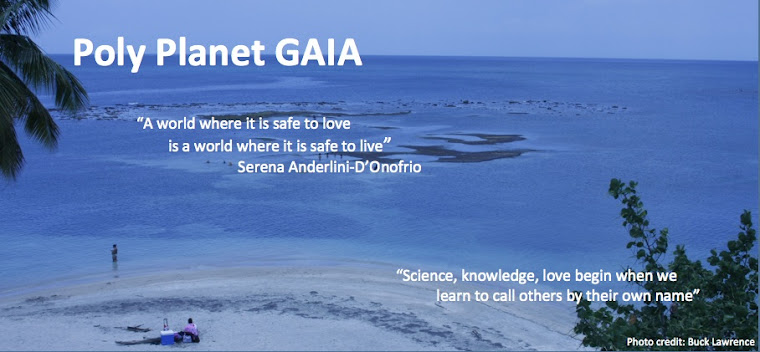Cont’d, Book Two: Clare Hemmings’ Bisexual Spaces. (Routledge 2002.)
By Jonathan Alexander and Serena Anderlini-D’Onofrio
Has also appeared in Bisexuality and Queer Theory, a special-topics issue of The Journal of Bisexuality. Re-published with permission of Routledge, New York.
Given such a sweep, Angelides’ text is well balanced by Clare Hemmings’ Bisexual Spaces: A Geography of Sexuality and Gender, a text which is as every bit as theoretically savvy as Angelides’, but one which also provides nicely drawn portraits of actual communities in order to ground the theoretical consideration of bisexuality. Published just a year afterA History of Bisexuality, Hemmings’ text examines bisexuality not just from the perspectives of the history of sexuality and queer theory but also from the analytics of cultural geography, which attends more to the lived experiences of bisexuals in specific locales. Such an approach offers her, ultimately, a somewhat more nuanced and sophisticated analysis of bisexuality.
Much like Angelides, Hemmings sees bisexuality as offering a theoretically rich way to interrogate and potentially destabilize the dominant hetero/homo binary:
…if we consider bisexual meaning in spatial terms, it becomes clear that bisexuality is not only a location between heterosexuality and homosexuality, binary genders or sexes, but also resides at the heart of lesbian community, between lesbian and gay communities, and in parallel with transsexuality within queer feminist terrain. As a result, a bisexual subject is capable of producing knowledge that is at odds with dominant and community formations of sexuality and gender, and for that reason alone is worth attending to. (196)
But Hemming’s approach to bisexuality through cultural geography offers us an acute awareness of the particularity of bisexuality as it is situated in specific locales; she maintains, for instance, that “…where bisexual identity or community is the result of…struggles over bisexual meaning, it is frequently at the expense of the specific nature of bisexual political and cultural location” (196). Hemmings details in her chapters, through interviews, media analyses, community profiles, and theoretical explorations, how the particularities of lived experience shape different understandings of bisexuality. In some communities, such as in lesbian communities in Massachusetts, bisexuality becomes figured as a space between lesbianism and straight male desire, so as to demarcate it as separate from lesbianism. In this way, bisexuality seems a “masculine threat to lesbian safety” (13). In contrast, in San Francisco, bisexuality becomes part of a fantasy of radical inclusiveness, a way to recognize and value the multiplicities of queer desire. Given such differences, Hemmings ultimately argues that bisexuality can be perceived both as "subversive of gender norms" and as a "reinscription of dominant (i.e. heterosexist) gender and/or sexual discourse" (117). Put another way, engaging in bi-erotic behavior can prompt us to question what a real ‘man’ or ‘woman’ should do; at the same time, other versions of bisexuality practiced by some people might allow men and women to maintain dominant heterosexual relationships while ‘playing around’ with homo-eroticism in the privacy of a bedroom—without having really to confront what it means to be openly queer.
Hemmings is perhaps most convincing about such complexities, theoretically at least, when comparing bisexuality and transgenderism. She notes, for instance, how “…there are a number of similarities in the ways that bisexuality and transsexuality are given and give meaning within queer and feminist studies currently…” (99). On one hand, both bisexuality and transgenderism are increasingly seen among queer theorists and activists as the new frontier in sexual rights advocacy. Trans studies in particular has a lot of current theoretical chic. On the other hand, however, bisexuals and the transgendered strike many as embracing heterosexual privilege, particularly since transsexuals are viewed as reifying norms of gender as they seek to become “real men” or “real women.” Ultimately, such attention to the complexity of lived bisexual experience prompts Hemmings to call for an approach to bisexuality that is aware of both its potential (theoretically) and its limitations (experientially):
A focus on bisexual knowledges found elsewhere, those not fully circumscribed by dominant formations of heterosexuality and homosexuality, …provides a strategy for resisting the narrativization of heterosexual and homosexual histories that rely on a denial of bisexual specificity. Instead of celebrating dubious bisexual transgressions of sex, gender, and sexual positions, I advocate an approach that insists that bisexuality’s capacity to generate radical reconfigurations of those oppositions resides not outside but within social and cultural meaning. (197)
As such, Hemmings’ approach, we feel, builds nicely on Angelides’ call for research that historicizes bisexuality in ways that both deconstruct older and limiting conceptualizations of sexuality while also paying attention to the historical particularity of how individuals and communities negotiate their relationships, both amongst themselves and in relation to controlling paradigms, including sexuality.
Also appeared in SexGenderBody

No comments:
Post a Comment